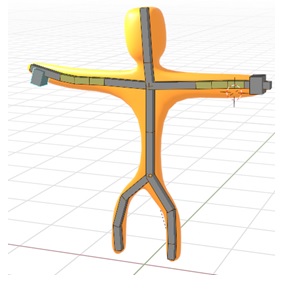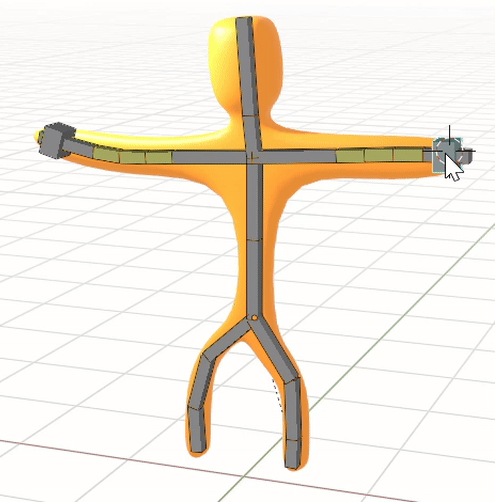
- Computer Graphics - Home
- Computer Graphics Basics
- Computer Graphics Applications
- Graphics APIs and Pipelines
- Computer Graphics Maths
- Sets and Mapping
- Solving Quadratic Equations
- Computer Graphics Trigonometry
- Computer Graphics Vectors
- Linear Interpolation
- Computer Graphics Devices
- Cathode Ray Tube
- Raster Scan Display
- Random Scan Device
- Phosphorescence Color CRT
- Flat Panel Displays
- 3D Viewing Devices
- Images Pixels and Geometry
- Color Models
- Line Generation
- Line Generation Algorithm
- DDA Algorithm
- Bresenham's Line Generation Algorithm
- Mid-point Line Generation Algorithm
- Circle Generation
- Circle Generation Algorithm
- Bresenham's Circle Generation Algorithm
- Mid-point Circle Generation Algorithm
- Ellipse Generation Algorithm
- Polygon Filling
- Polygon Filling Algorithm
- Scan Line Algorithm
- Flood Filling Algorithm
- Boundary Fill Algorithm
- 4 and 8 Connected Polygon
- Inside Outside Test
- 2D Transformation
- 2D Transformation
- Transformation Between Coordinate System
- Affine Transformation
- Raster Methods Transformation
- 2D Viewing
- Viewing Pipeline and Reference Frame
- Window Viewport Coordinate Transformation
- Viewing & Clipping
- Point Clipping Algorithm
- Cohen-Sutherland Line Clipping
- Cyrus-Beck Line Clipping Algorithm
- Polygon Clipping Sutherland–Hodgman Algorithm
- Text Clipping
- Clipping Techniques
- Bitmap Graphics
- 3D Viewing Transformation
- 3D Computer Graphics
- Parallel Projection
- Orthographic Projection
- Oblique Projection
- Perspective Projection
- 3D Transformation
- Rotation with Quaternions
- Modelling and Coordinate Systems
- Back-face Culling
- Lighting in 3D Graphics
- Shadowing in 3D Graphics
- 3D Object Representation
- Represnting Polygons
- Computer Graphics Surfaces
- Visible Surface Detection
- 3D Objects Representation
- Computer Graphics Curves
- Computer Graphics Curves
- Types of Curves
- Bezier Curves and Surfaces
- B-Spline Curves and Surfaces
- Data Structures For Graphics
- Triangle Meshes
- Scene Graphs
- Spatial Data Structure
- Binary Space Partitioning
- Tiling Multidimensional Arrays
- Color Theory
- Colorimetry
- Chromatic Adaptation
- Color Appearance
- Antialiasing
- Ray Tracing
- Ray Tracing Algorithm
- Perspective Ray Tracing
- Computing Viewing Rays
- Ray-Object Intersection
- Shading in Ray Tracing
- Transparency and Refraction
- Constructive Solid Geometry
- Texture Mapping
- Texture Values
- Texture Coordinate Function
- Antialiasing Texture Lookups
- Procedural 3D Textures
- Reflection Models
- Real-World Materials
- Implementing Reflection Models
- Specular Reflection Models
- Smooth-Layered Model
- Rough-Layered Model
- Surface Shading
- Diffuse Shading
- Phong Shading
- Artistic Shading
- Computer Animation
- Computer Animation
- Keyframe Animation
- Morphing Animation
- Motion Path Animation
- Deformation Animation
- Character Animation
- Physics-Based Animation
- Procedural Animation Techniques
- Computer Graphics Fractals
Character Animation in Computer Graphics
Sometimes we need animate characters or avatars. These animated figures, known as articulated figures, are composed of several parts that move together to create the appearance of realistic motion.
Character animation typically involves a combination of keyframing, kinematics, and deformation techniques. In this chapter, we will see these concepts in depth, focusing on skeleton-based animation, inverse kinematics, skinning techniques, facial animation, and motion capture.
Skeleton-Based Animation
The concept of skeleton based animation is new to us. That is used for character animations. The characters are usually composed of two layers: a skeleton and a skin as shown in the following figure. The skeleton acts as the internal framework, much like a real-life skeleton, with joints and bones that determine how the figure moves.

They grey boxes are skeleton and orange shapes are skin. The skin is the outer layer, which is the visible surface that covers the skeleton. Skeletons will not be rendered. The skeleton is a hierarchical structure made up of connected joints, where each joint controls a specific part of the figure's body, such as the limbs or head.
The skeleton itself does not appear in the final animation; rather, its movement determines how the skin will deform, which is what the audience sees. This process involves applying transformations to the skeleton’s joints. Each joint acts as a parent to the hierarchy below it. It means any movement applied to a joint will affect all the joints and bones attached to it. By adjusting the position and rotation of the joints, animators can control the motion of the entire figure.
Forward Kinematics
One of the most basic methods of controlling skeleton movement is through forward kinematics (FK). In FK, the animator directly sets the parameters for each joint, such as its angle or position, to create movement. For example, to animate a character’s arm reaching for an object, the animator would adjust the rotation of the shoulder, elbow, and wrist joints.

In the figure we are rotating each bone manually. At first the upper arm, then the lower arm and finally the wrist.
FK is simple but can become cumbersome when animating complex movements because the animator must manually control every joint in the chain. For instance, to animate a walk cycle, the animator has to set the position of each joint involved in the motion, such as the hips, knees, and ankles.
Inverse Kinematics
To solve the issue of Forward Kinematics, we use another concept called the Inverse kinematics (IK). It provides a more intuitive approach to controlling articulated figures. Especially for movements that involve the endpoint of a joint chain, like a hand or foot.
With Inverse Kinematics, the animator specifies the desired position of the endpoint (the effector), and the system automatically calculates the necessary angles and positions for the internal joints.
See the following animated gif to get a feel of how it would appear −

Inverse Kinematics works by solving a set of mathematical equations. These equations take into account the relationship between the end effectors position and the angles of the internal joints. However, solving these equations is not always straightforward because there can be multiple valid configurations of the joints that result in the same end effector position.
The system often needs to apply additional constraints to ensure that the motion looks natural. For example, limiting the range of motion of a knee or elbow to prevent unrealistic movements.
Skinning: Rigid and Smooth
After understanding the FK and IK we must follow the idea of skins. The skin deforms the figure's skin to create the final visual effect. Skinning is the process of binding the skin (the visible surface) to the skeleton so that when the skeleton moves, the skin follows.
There are two main types of skinning: rigid skinning and smooth skinning.
1. Rigid Skinning
In rigid skinning, each vertex of the skin is assigned to a specific joint. When the joint moves, the vertex moves with it, maintaining a fixed relationship to the joint. This technique is simple but has its limitations. Since each vertex is influenced by only one joint, rigid skinning can result in unnatural, blocky deformations, especially near areas like elbows or knees where there is a lot of bending.
2. Smooth Skinning
Smooth skinning provides a more flexible and natural-looking deformation. Instead of being controlled by a single joint, each vertex of the skin is influenced by multiple joints. The degree of influence is determined by weights assigned to each joint. For example, a vertex near the elbow might be affected by both the upper arm and the forearm joints. As the elbow bends, the vertex smoothly deforms, resulting in more realistic movement.
Smooth skinning requires more skill and control from the animator because the weights need to be carefully adjusted to achieve the desired effect. Improper weighting can lead to undesirable deformations, such as the skin stretching too much or appearing too rigid.
Facial Animation
Skeletons are suitable for body movements. There are other kinds of animations for character, called facial animation. It requires a different approach due to the human face being controlled by muscles. These muscles are directly attached to the skin, allowing for a wide range of expressions and subtle changes in appearance.
Methods for creating facial animations include using expressive parameters, which control specific aspects of the face, such as eye width or eyebrow movement, to create different facial expressions.
Another advanced method is the Facial Action Coding System (FACS), which breaks down facial movements into basic action units (AUs) that correspond to specific muscle movements, allowing animators to create complex expressions and transitions between them.
Motion Capture
Motion capture is a technique used by animators to create realistic character animations from scratch. It uses recording the movements of a real actor and applying them to a digital character. There are two main types: electromagnetic and optical.
- Electromagnetic motion capture uses sensors to track the actor's position in real time, but can be expensive and susceptible to interference.
- Optical motion capture uses small markers attached to the actor's body, tracked by multiple cameras, to create a 3D representation of their movements.
MC is particularly useful for complex movements like walking, running, or stunts. However, the data often requires cleanup and editing to ensure the movements look natural and fit the character's proportions.
Conclusion
In this chapter, we explained the key concepts and techniques used in character animation in computer graphics. We started with an overview of skeleton-based animation, which uses a hierarchical structure of joints to control character movement.
We then discussed the forward kinematics (FK) and inverse kinematics (IK), these two methods for controlling joint motion. Following that, we covered the skinning techniques, including rigid and smooth skinning, which bind the skin to the skeleton.
We also covered facial animation techniques, which gives controlling muscle movements to create expressions. Finally, we discussed the role of motion capture in recording and applying real-world motion to digital characters.